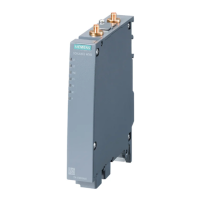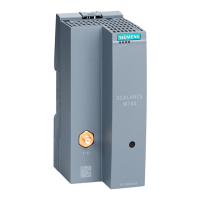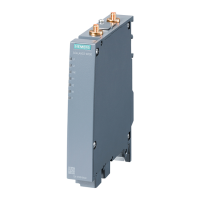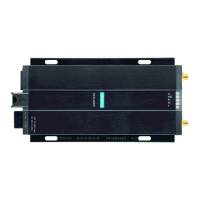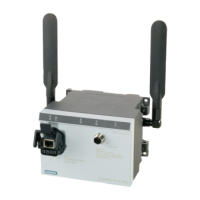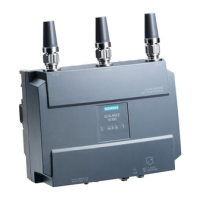Configuring with Web Based Management
6.4 "Information" menu
SCALANCE W780/W740 to IEEE 802.11n Web Based Management
134 Configuration Manual, 08/2018, C79000-G8976-C267-13
The table contains the following boxes:
●
Shows the port via which the device communicates.
●
Shows the status of the port. The following values are possible:
– Disabled
The port was removed manually from the spanning tree and will no longer be taken
into account by the spanning tree.
– Designated
The ports leading away from the root bridge.
– Alternate
The port with an alternative route to a network segment
– Backup
If a switch has several ports to the same network segment, the "poorer" Port becomes
the backup port.
– Root
The port that provides the best route to the root bridge.
– Master
This port points to a root bridge located outside the MST region.
●
Displays the current state of the port. The values are only displayed. The parameter
depends on the configured protocol. The following statuses are possible:
– Discarding
The port receives BPDU frames. Other incoming or outgoing frames are discarded.
– Listening
The port receives and sends BPDU frames. The port is involved in the spanning tree
algorithm. Other outgoing and incoming frames are discarded.
– Learning
The port actively learns the topology; in other words, the node addresses. Other
outgoing and incoming frames are discarded.
– Forwarding
Following the reconfiguration time, the port is active in the network. The port receives
and sends data frames.
●
Describes the type of spanning tree in which the port operates
●
If the path calculated by the spanning tree is possible over several ports of a device, the
port with the highest priority (in other words the lowest value for this parameter) is
selected. A value between 0 and 240 can be entered for the priority in steps of 16. If you
enter a value that cannot be divided by 16, the value is automatically adapted. The
default is 128.

